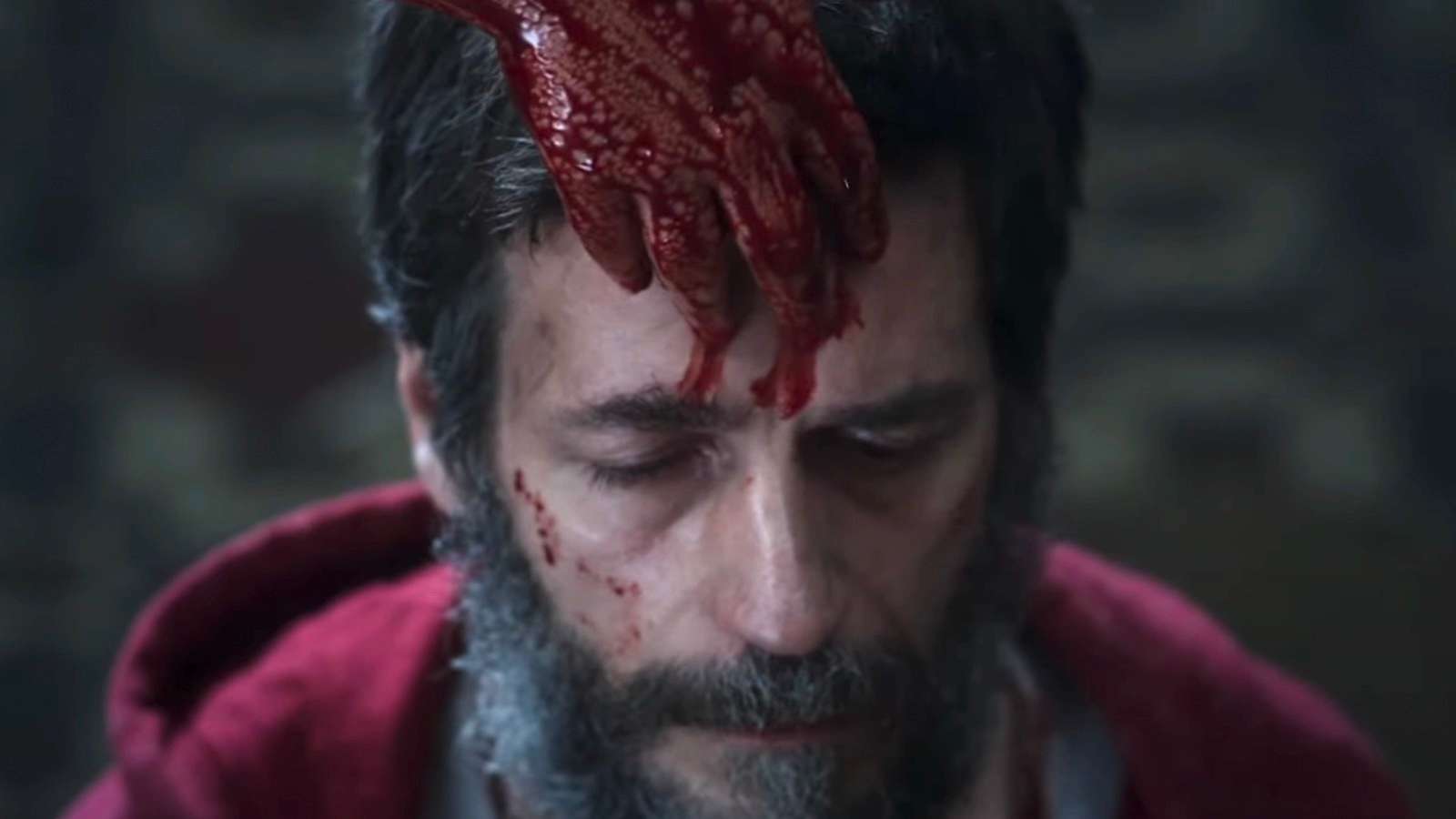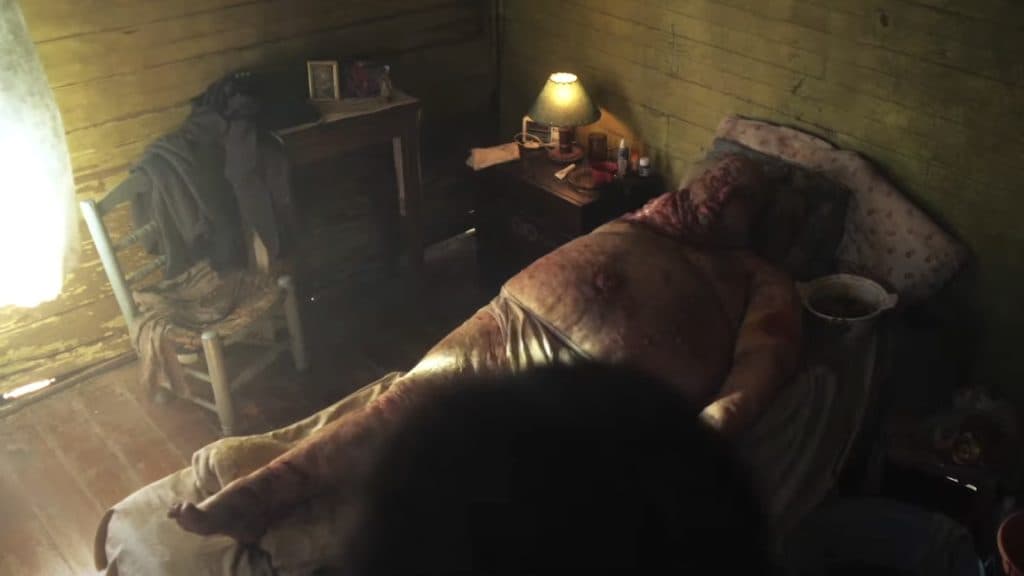When Evil Lurks review: A delightfully brutal take on demonic possession
 IFC Films/Shudder
IFC Films/ShudderWhen Evil Lurks is a bonkers and brutal attack on the senses, delivering a grisly new take on the demonic possession trope that proves horror still has the ability to shock. Consider this your Halloween treat.
In an age where we have just about everything at our fingertips – every story, every theme, every idea – it can feel as if the crowded horror genre fails to shock anymore.
But then a movie like When Evil Lurks comes along and restores the collective faith; original stories are still out there. Just as he did with his 2017 hit Terrified, writer-director Demián Rugna doesn’t hold any punches with his latest assault on the senses, delivering a totally unique and fresh spin on the demonic possession sub-genre.
Releasing in cinemas on the same day as David Gordon Green’s first entry of his franchise revival, The Exorcist: Believer, the two movies deal with the same theme, though they couldn’t be more different in style and delivery. When Evil Lurks carves out its own mythology – it’s brutal, bonkers, and there’s not one crucifix in sight. Here is our spoiler-free review.
Rotten to the core
Without context, it would be easy to fool viewers into thinking they’re watching a gangster or home invasion movie with the opening scene. Two brothers in an Argentinian village hear gunshots in the night, flashing in the distance as one wipes condensation from the window to get a better look. “Maybe it’s Ruiz, or some poacher,” says Jimmy (Demián Salomon), to which Pedro (Ezequiel Rodriguez) replies, “No, a poacher doesn’t shoot so much,” as he loads up his shotgun.
Even in the first minute, there’s a sense of panic and dread, one that doesn’t let up for the nearly 100-minute runtime. When a gruesome discovery leads them to the home of a local family, they’re confronted with a possessed man known as a “rotten” – but, as said, don’t expect writhing bodies or growling voices. This evil shell is placid, bloated, and oozing pus from every orifice.
This is our first clue to leave our preconceptions at the door. “I thought that by praying we would be able to help him,” says the distraught mother, to which Pedro shouts, “Churches are dead, ma’am.” What’s refreshing is that there are no skeptics here; no science-minded characters who need convincing of the clear evil that lies in front of them. Everyone in When Evil Lurks is all too clued up on what’s going on here, and while we don’t see it, we get the sense that it’s powerful enough to end society as we know it.
The “rotten” repeatedly convinces those around to kill him, but everyone knows you can’t just do that – by killing a “rotten,” you unleash hell. And don’t even think about using a gun. Instead, local farmer Ruiz and the brothers attempt to get rid of the body, assuming (hoping) that by taking him as far away as possible, they’ll be safe – or at least buy some time. But when the body falls off the back of their truck, it unleashes a chaotic and horrifying chain of events.
No one is safe in Rugna’s world
The tale that follows is anything but predictable. The film’s pulse is intense and relentless, with every frame meticulously designed to suffocate the audience with a palpable sense of unease, only to then pull the rug with utter absurdity. There are clear parallels to the pandemic; when Pedro rounds up his family to run for the hills, we repeatedly hear how these incidents tend to spread “in the city.” But the allegory is so subtle that it doesn’t feel overbearing or patronizing.
Though it takes a minute to heat up, this time is needed to deliver its mythology and establish the characters’ fear, which in turn establishes our own fear. We know something bad is coming before it’s even happened, and when it gets going, it doesn’t let up. There’s festering evil at every corner, and unlike mainstream horror that might treat its most vulnerable with some sympathy, in Rugna’s sick and twisted universe, no one is safe.
 IFC Films/Shudder
IFC Films/ShudderThis is one of many reasons When Evil Lurks is not for the faint-hearted. Barring a few moments where VFX slightly mars the authenticity, visually, the gore is perfect, delivering a visceral experience and a few sequences where even the most hardened horror fans’ jaws will be on the floor. There are also moments of genuine beauty, particularly between Pedro and Jimmy, as well as their affection towards Pedro’s autistic son. They’re not often, but enough to raise the stakes and for audiences to understand their motivations.
Rugna doesn’t patronize the audience. There are definite ground rules in this new form of possession, but these are drip-fed through various characters, allowing them to land naturally. The same goes for the trauma of Pedro’s past. The only criticism is that the crescendo takes a turn for the baffling and it gets a bit incoherent. But that’s okay. Sometimes horror isn’t about wrapping up every loose end neatly; it’s about the lingering sense of unease, and an experience that will ignite fervent debates and contemplation long after the credits roll.
When Evil Lurks review score: 4/5
In an era when the line between horror and predictability blurs, When Evil Lurks emerges as a beacon of originality. Rugna’s daring approach, both in narrative and execution, revives the art of storytelling, making us believe in the power of cinema to terrify once more. In the realm of horror, When Evil Lurks is a breath of fresh, albeit putrid, air.
When Evil Lurks arrives in theaters on October 6 before streaming on Shudder from October 27. You can check out more of our horror coverage below:
The Exorcist: Believer cast | How many Saw movies are there? | LGBTQ+ horrors | How to watch Evil Dead Rise | Terrifier 3 | The Boogeyman ending | Tin and Tina explained | The Thing 2 | Is The Pope’s Exorcist true story? | How to watch M3GAN | Paranormal Activity in order



